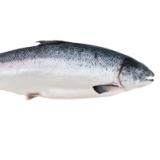Fluorine from krill not accumulated in fish

Current EU regulations restrict the use of plankton, such as krill, as feed ingredients. This is because the EU claims that the fluorine present in these feed ingredients pose a risk to human health.
Nutrition and Seafood Research (NIFES) showed that fluoride is not accumulated
in the fillets of salmon that have been raised on krill meal-based feed with a
fluoride content that is more than twice as high as the EU maximum limit of 150
mg per kg feed.
Corresponding feed trials were also carried out with cod
and halibut. Atlantic cod were given feed containing 100% replacement of fish
meal by Antarctic krill meal for 75 days. The feed fluoride level was five times
higher than the EU maximum limit. Analyses of fillets showed that the amount of
fluoride was approximately the same as in cod that had been given feed
containing no krill meal. Nor was there fluoride in the fillet of halibut that
had been fed on plankton-based feed with a fluoride content almost seven times
higher than the EU maximum limit for fluorine in fish feed. The level of cadmium
and copper was also measured in the feeding trials and no accumulation was found
in the fish fillets.
Based on the fish feeding trials carried out at
NIFES and other similar research, the European Commission is considering
increasing the upper limit for fluoride in feed from 150 mg per kg to 350 mg per
kg, while the maximum limit for cadmium has recently been
increased.
Related website:
NIFES











